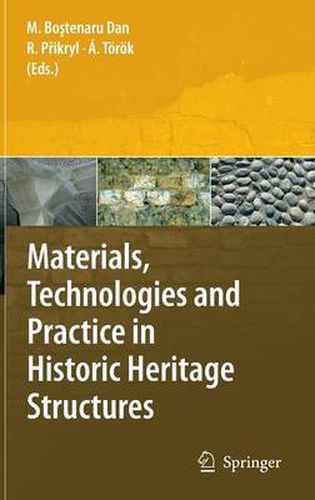Readings Newsletter
Become a Readings Member to make your shopping experience even easier.
Sign in or sign up for free!
You’re not far away from qualifying for FREE standard shipping within Australia
You’ve qualified for FREE standard shipping within Australia
The cart is loading…






This title is printed to order. This book may have been self-published. If so, we cannot guarantee the quality of the content. In the main most books will have gone through the editing process however some may not. We therefore suggest that you be aware of this before ordering this book. If in doubt check either the author or publisher’s details as we are unable to accept any returns unless they are faulty. Please contact us if you have any questions.
One distinct feature of human society since the dawn of civilization is the systematic use of inorganic building materials, such as natural stone, unburnt and burnt soil, adobe and brick, inorganic binders like lime and cement, and reinforced concrete. Our heritage has cultural, architectural and technological value and preserving such structures is a key issue today. Planners and conservation scientists need detailed site surveys and analyses to create a database that will serve to guide subsequent actions. One factor in this knowledge base is an understanding of how historic materials were prepared and the crucial properties that influence their long-term behaviour. Any assessment of the way such materials perform must crucially be based on an understanding of the methods used for their analysis.
The editors here add to the knowledge base treating the materials used in historic structures, their properties, technology of use and conservation, and their performance in a changing environment. The book draws together 18 chapters dealing with the inorganic materials used in historic structures, such as adobe, brick, stone, mortars, concrete and plasters. The approach is complex, covering material characterisation as well as several case studies of historic structures from Europe, including Germany, Ireland, Italy, Poland, Portugal, Scotland, Slovenia and Spain, and the My Son Temples in Vietnam. An equally important component of the book covers the analysis of materials, together with a treatment of sustainable development, such as the protection of monuments from earthquakes and climate change.
The authors are all leading international experts, drawn from a variety of backgrounds: architecture, civil engineering, conservation science, geology and material science, with close links to professional organisations such as ICOMOS or universities and research centres throughout Europe.
Audience: This book will be of interest to geologists, engineers, restorers, consulting engineers, designers and other professionals dealing with cultural heritage and sustainable development. Also graduate students in applied geo-science (mineralogy, geochemistry, petrology), architecture and civil engineering will find interesting information in this book.
$9.00 standard shipping within Australia
FREE standard shipping within Australia for orders over $100.00
Express & International shipping calculated at checkout
This title is printed to order. This book may have been self-published. If so, we cannot guarantee the quality of the content. In the main most books will have gone through the editing process however some may not. We therefore suggest that you be aware of this before ordering this book. If in doubt check either the author or publisher’s details as we are unable to accept any returns unless they are faulty. Please contact us if you have any questions.
One distinct feature of human society since the dawn of civilization is the systematic use of inorganic building materials, such as natural stone, unburnt and burnt soil, adobe and brick, inorganic binders like lime and cement, and reinforced concrete. Our heritage has cultural, architectural and technological value and preserving such structures is a key issue today. Planners and conservation scientists need detailed site surveys and analyses to create a database that will serve to guide subsequent actions. One factor in this knowledge base is an understanding of how historic materials were prepared and the crucial properties that influence their long-term behaviour. Any assessment of the way such materials perform must crucially be based on an understanding of the methods used for their analysis.
The editors here add to the knowledge base treating the materials used in historic structures, their properties, technology of use and conservation, and their performance in a changing environment. The book draws together 18 chapters dealing with the inorganic materials used in historic structures, such as adobe, brick, stone, mortars, concrete and plasters. The approach is complex, covering material characterisation as well as several case studies of historic structures from Europe, including Germany, Ireland, Italy, Poland, Portugal, Scotland, Slovenia and Spain, and the My Son Temples in Vietnam. An equally important component of the book covers the analysis of materials, together with a treatment of sustainable development, such as the protection of monuments from earthquakes and climate change.
The authors are all leading international experts, drawn from a variety of backgrounds: architecture, civil engineering, conservation science, geology and material science, with close links to professional organisations such as ICOMOS or universities and research centres throughout Europe.
Audience: This book will be of interest to geologists, engineers, restorers, consulting engineers, designers and other professionals dealing with cultural heritage and sustainable development. Also graduate students in applied geo-science (mineralogy, geochemistry, petrology), architecture and civil engineering will find interesting information in this book.